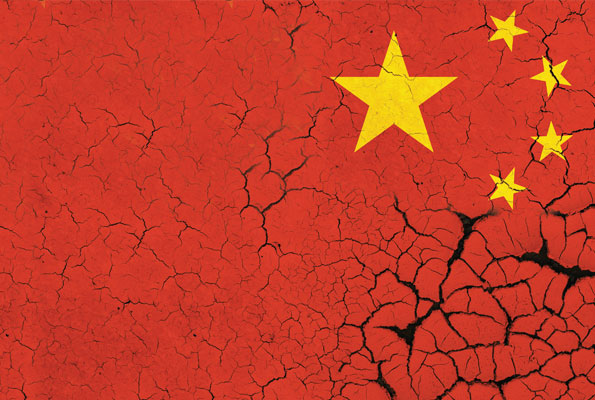The growth engine of the world has traditionally been China. However, recently, the downturn in its economy has frightened world leaders and investors, who are no longer counting on it to be a bulwark against weakness elsewhere. The second-largest economy in the world is the cause of the issue for the first time in decades.
The Hang Seng (HSI) Index of Hong Kong entered a bear market after losing more than 20% since its most recent peak in January. The Chinese yuan hit its lowest point in 16 years, leading the central bank to launch its most aggressive defence of the currency to date by setting a rate to the dollar that was far higher than the anticipated market value.
The problem is that growth has stalled after an early-year surge in activity following the easing of COVID lockdowns. The real estate crisis is becoming worse, consumer prices are dropping, and exports are declining. Youth unemployment has gotten so terrible that the government no longer releases the statistics.
To make matters worse, two well-known investment firms and a major homebuilder recently failed to make payments to investors, reigniting worries that increased threats to financial stability could result from the housing market’s continuing decline. A new round of growth downgrades has been sparked by a lack of decisive action to boost domestic demand and concerns about contagion, with some big investment banks lowering their projections of China’s economic growth to below 5%.
“We downgrade China’s real GDP growth forecast…as the property downturn has deepened, external demand has weakened further, and policy support has been less than expected,” UBS analysts wrote in a research note, CNN Business reported.
Before this, analysts at Nomura, Morgan Stanley, and Barclays revised their projections. That means China may considerably miss its stated goal of around 5.5% growth, which would be embarrassing for President Xi Jinping’s administration.
The global financial crisis of 2008, when China introduced the greatest stimulus package ever and became the first significant economy to recover from the crisis, is a long cry from the current situation. In the early stages of the pandemic, China was the only significant developed country to avoid a recession. What then went wrong?
Property woes
Since April, when the impetus from a great start to the year evaporated, China’s economy has been in a slump. However, due to defaults by Zhongrong Trust, a leading trust organisation, and Country Garden, once the nation’s largest developer by property sales, worries have grown. Investors were alarmed by reports that Country Garden had neglected to make interest payments on two US dollar bonds, which brought back memories of Evergrande, whose financial defaults in 2021 heralded the beginning of the real estate crisis. Even while Evergrande is still restructuring its debt, Country Garden’s problems have renewed fears about the Chinese economy.
Beijing has implemented a slew of encouraging policies to boost the housing industry. However, even the more powerful players are currently on the verge of default, highlighting the difficulties Beijing will confront in trying to contain the crisis. In the interim, it appears that the $2.9 trillion domestic investment trust market has been affected by loan defaults at real estate developers. According to business statements, Zhongrong Trust, which manages $87 billion worth of funds for corporate clients and rich individuals, has neglected to pay back a series of investment goods to at least four companies, totalling around $19 million.
“Further losses in the property sector risk spilling over into wider financial instability. With domestic funds increasingly fleeing to the safety of government bonds and bank deposits, more non-bank financial institutions could face liquidity problems,” Julian Evans-Pritchard, head of China economics at Capital Economics said.
Local government debt
Another big issue is local government debt, which has increased significantly as a result of a dramatic decline in land sale revenues as a result of the real estate downturn and the lingering effects of the expense of enforcing pandemic lockdowns. In addition to posing significant dangers to Chinese banks, the extreme fiscal strain being experienced at the local level restricts the government’s ability to promote growth and enhance public services. Beijing has so far released a constant stream of economic stimulus measures, including interest rate reductions and other actions to support the real estate market and consumer firms.
But it hasn’t taken any significant action. Economists and analysts said that this is the case because China is now too indebted to stimulate the economy the way it did during the global financial crisis 15 years ago. To lessen the effects of the world financial crisis, Chinese leaders unveiled a four trillion yuan ($586 billion) fiscal plan back then. However, the policies, which were centred on governmental infrastructure projects, also resulted in a significant rise in local government debt and an unparalleled extension of credit, from which the economy is still battling to recover.
“While there is also a cyclical element to the current downturn that justifies greater stimulus, policymakers appear concerned that their traditional policy playbook would lead to a further rise in debt levels that would come back to bite them in future,” Evans-Pritchard said.
Beijing’s officials reiterated that limiting systemic debt concerns at local governments was one of their key priorities. According to a statement from the central bank, the People’s Bank of China, the financial regulator, and the securities regulator, all vowed to cooperate to address this difficulty.
Demographic decline
Additionally, China is confronted with a demographic issue and tense relations with important commercial partners like the United States and Europe. According to a recent post by state-owned Jiemian.com, citing research by a unit of the National Health Commission, the nation’s total fertility rate—the average number of children a woman would have over her lifetime—dropped to a record low of 1.09 last year from 1.30 just two years earlier.
As a result, China’s fertility rate has surpassed that of Japan, a nation long noted for its ageing population. China revealed figures earlier this year showing that its population began to decline last year for the first time in 60 years.
“China’s ageing demographics present significant challenges to its economic growth potential,” analysts from Moody’s Investors Service in a research report said.
A broader budget deficit and a greater debt load could result from the fall in the labour force and rising healthcare and social expenses. Additionally, a reduced workforce might reduce domestic savings, raising interest rates and reducing investment.
“Housing demand will fall in the long term,” they added.
“Demographics, along with slowing migration from the countryside to urban areas and geopolitical fracturing, are structural in nature and largely outside of policymakers’ control,” Evans-Pritchard said.
“The big picture is that trend growth has fallen substantially since the start of the pandemic and looks set to decline further over the medium term,” he added.
Should China fall short of reaching a yearly GDP growth of 5 per cent this year, the repercussions would be severe, impacting not only its decelerating economy and the global economic landscape, but also serving as a significant signal that the remarkable four-decade period of prosperity for the country might have reached its conclusion.



